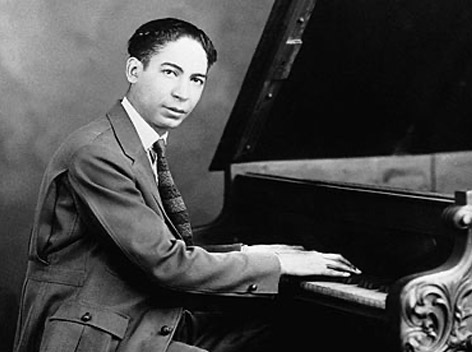
Contemplation in a World of Action
Both contemplation and service have always been important themes held together in the Christian life. While these two themes are deeply inter-related, activism is often the default mode in our modern context. Contemplative practices are easily neglected.
It was a serious health breakdown in my 30’s—exhaustion from years of work with drug addicts and troubled youth—that set me off on a trajectory of integrating spiritual practices (that I felt were not sufficiently developed within my faith tradition) with good theology and committed missional activity.
As a son of the Reformation, part of what I had to do in order to become re-balanced was to reach outside the richness of my own tradition, to be re-introduced to some of the ancient Christian teachers on how to walk the path of contemplation. With the help of these teachers, I was able to embrace the old theme of head, heart, and hand; I began an ongoing wrestle with the integration of contemplation and action.
In light of my own experience, I am proposing that we need to return to the ancient wells of the Christian tradition with its emphasis on the relationship between contemplation and action, and by way of extension, to the importance of self-care and service, nurture and self-giving, prayer and ministry, and work and Sabbath. All of this is so that we don’t run on empty and so that we avoid what Thomas Green called giving water “when the well runs dry.”[1] Put bluntly, and in good Dutch fashion, we need to find the Monk within.[2]
Contemplation and Action in the Christian Tradition
Living an integral spirituality, which brings together head (theological formation), heart (spiritual formation), and hand (missional formation), or bringing together contemplation and action, was a theme Christians wrestled with from earliest times.
St. Augustine (354–430)
Augustine notes that there are three forms of life—“contemplation and examination of the truth,” being “buried in carrying on human affairs,” and a “third which combines both of these.”[3] He goes on that one should not be so reflective “not to think of his neighbours’ welfare,” nor so busy with the ordinary affairs of life “not to seek after contemplation.”[4] In the active life one should not seek honour and power but to do the work of mercy and justice for its own sake. He explains, “the obligations of charity make us undertake righteous business,” and the love of truth calls us to contemplation. Augustine combined both the active and contemplative life and speaks of the blessedness of an inner communion with God. He writes, “this I often do, this delights me, and as far I may be freed from necessary duties, unto this pleasure I have recourse. And sometimes Thou dost admit me to an interior experience... [of] a wondrous sweetness.”[5]
St. Gregory the Great (c.540–604)
“Every one who is converted to the Lord, desires the contemplative life... but first it is necessary that in the night of the present life he work that good he can, and exert himself in labour.”[6] Gregory goes on, “it is the right order of living to pass from the active life to the contemplative” and “for the mind to turn back from the contemplative to the active.”[7] He goes on to point out that “the active life is by necessity, the contemplative [is] by choice.”[8] Gregory further points out that it is necessary to “put aside the tumult of temporal activities” and in one’s “contemplation [to] search out the... divine will.” Thus “we hear inwardly and in silence what we must do openly.”[9] He concludes, “The voice of God is heard when, with minds at ease, we rest from the bustle of this world, and the divine precepts are pondered by us in the deep silence of the mind.”[10]
St. Bernard of Clairvaux (1090–1153)
St. Bernard reminds us that contemplation and action “are intimately related, they are chamber companions and dwell together.” He goes on to note that adequate time spent in contemplation is difficult “because the duties of office and the usefulness of work press upon us more urgently.” He goes on to note that it is easy for us to “fall from the state of contemplation... [and] resort... to action.”[11] But conversely warns us that it is possible to “desire the repose of contemplation” and not to bring forth the “blossoms of good works.”[12]
Jesus the Contemplative Activist
From these and other leading church figures,[13]
we gain some idea that both contemplation and service are important themes in
the Christian life. But our greatest model of the balance between contemplation
and action is Christ himself. St. Gregory notes,
“Christ set forth in Himself patterns of both lives, that is, the active and
the contemplative, united together.”[14]
It seems it would behove us to turn once again to the Gospels
to seek to learn from the one who is the icon of all that we are to be and
become.
In Mark’s Gospel, we predominately meet Jesus the activist. In John’s Gospel, Jesus the contemplative shines through most clearly. Taken together, these two Gospels provide a pattern to follow in which contemplation and action are held in fruitful tension.
Mark’s Gospel
This Gospel shows Jesus in action. Mark makes clear Jesus’s modus operandi. And if Jesus is the paradigmatic human and we are committed to the imitatio Christi, then here are some of the things we can readily learn and emulate:
Jesus’s central concern was the coming of the Kingdom of God involving the presence, rule, and restorative work of God in human affairs; he was willing to give his life for this.
- Jesus took time to minister to individuals, seeing them as part of his mission, not diversions from it.
- Jesus was a community builder and a member of an intentional common purse community.
- Jesus sought to restore broken relationships, bring healing, and push back the powers of darkness in people’s lives.
- Jesus confronted the religious leaders and system of his day, demonstrating a different kind of authority.
- Jesus deliberately healed on the Sabbath day, illuminating a whole new set of values.
- Jesus shows a special concern for the poor, the needy and cultural outsiders.
Mark’s Jesus is in a hurry to fulfil his mission. Only very briefly do we get snippets of the contemplative dimension of his life, such as Jesus’s testing in the desert (Mk. 1:13); praying at the beginning of the day (Mk. 1:35); going to a deserted place to rest (Mk. 6:31); praying in Gethsemane (Mk. 14:32).
John’s Gospel
It is in John’s Gospel that we more fully meet Jesus the contemplative. This gospel highlights the intimacy between Jesus and his Father and their common participation in all Jesus sought to do. Their bond is so close that Jesus can say “the Father and I are one” (Jn. 10:30).
The heart of the contemplative experience is attentiveness and gazing, framed by the practices of solitude and prayer. The gift of contemplation is joining, abiding, and union with God. It is more about friendship with God than about getting wisdom or life direction, although that is part of it. Let’s then learn from this gospel:
- Jesus speaks of knowing the Father intimately and reciprocally—“just as the Father knows me, I know the Father” (Jn. 10:15).
- Jesus speaks of knowing the Father intimately and reciprocally—“just as the Father knows me, I know the Father” (Jn. 10:15).
- Jesus speaks of a mutual indwelling—“the Father is in me and I am in the Father” (Jn. 10:38, 14:20, 6:57).
- Jesus testifies that he is doing the work that the Father has given him and not doing his own thing—“I have not spoken on my own” but the Father has “given me... what to say” (Jn. 12:49, 7:16). He speaks of the “works that the Father has given me to complete” (Jn. 5:36).
- Jesus constantly acknowledges that the Father has sent him (Jn. 5:36, 7:16, 8:16, 14:24).
- Jesus asserts that he has fully revealed the Father—“I have made known to you everything that I have heard from my Father” (Jn. 15:15), and further, “if you know me, you will know my Father also” (Jn.14:7).
Behind the busy Jesus of Mark’s Gospel stands the contemplative Jesus of John’s Gospel. In Mark’s Gospel we see the public persona of Jesus. In John’s Gospel we catch a glimpse of the inner life of Jesus.
In these nuanced Gospel perspectives, we see that Jesus’s outer life and public ministry were the overflow of his rich inner life. The challenge for us is that both our church and society celebrate the outer life—what we do and achieve—but know little of the necessity and power of the inner life. We are often “hollow people.”
The Integration of Contemplation and Action
There are many ways of integrating contemplation and action. The most basic is to think about a double movement of contemplation.[15] The movement we are most familiar with is the movement of transcendence where we contemplate the face of God. Here are the practices of the reflective reading of scripture, the discipline of solitude, and the life of prayer. The second movement is that of incarnation. Here we contemplate the way of God in the world, the hidden face of Christ in friend or stranger, the vulnerable and the poor, and the movement of the Spirit in our society. Both forms of contemplation move us to action, and our action in turn calls us back to prayer and further reflection.
Put in other words, when we seek the face of God, God will always draw us back to his concerns for the world. Involved in the concerns of the world, we are always called back to be nurtured and loved and sent out again.
Reflection and action, service and prayer, work and Sabbath are among the most basic rhythms of the Christian life.
To Contemplate Is to Wait on God
The most basic contemplative practice is to make time to draw aside from normal life’s activities and to enter into a space of stillness, attentiveness, and receptivity. It has nothing to do with creating a blank mind, but with coming before God to wait. This is not an attempt to make something happen. It is making space to receive what God desires to give.
We may engage in the reflective reading of scripture, journaling, art, or other practices, but one’s basic posture remains one of attentive listening with a heart of prayer.
The rich gifts that can come from making this a regular part of one’s life are manifold. They include a growing sense of being well-loved by God, a deeper sense of dependency on the Spirit, on-going transformation into the likeness of Christ, deeper repentance, a growing sense of God’s calling for our lives, a deeper understanding of the needs of our world, and a costly commitment to minister to those needs.
To be a person shaped by the contemplative-activist Christ is both a call and an invitation. Imitating Christ in these areas of his life significantly changes the way we engage life and our world. While activism is our default mode in the modern world, to become more contemplative will change the way we are and act in that world.
[1] Thomas H. Green, S.J., When the Well Runs Dry: Prayer Beyond the Beginnings. Notre Dame: Ave Maria Press, 1979.
[2] See J. M. Talbot, The Universal Monk: The Way of the New Monastics. Minneapolis: Liturgical Press, 2011 and D. Okholm, Monk Habits for Everyday People: Benedictine Spirituality for Protestants. Grand Rapids: Brazos Press, 2007.
[3] Quoted in Dom Cuthbert Butler, Western Mysticism: Augustine, Gregory and Bernard on Contemplation and the Contemplative Life. (Mineola, NY: Dover Publications, 2003. First published 1926), p.164.
[4] Butler, Western Mysticism, p.165.
[5] Butler, Western Mysticism, p.165.
[6] Butler, Western Mysticism, p.172.
[7] Butler, Western Mysticism, p.173.
[8] Butler, Western Mysticism, p.174.
[9] Butler, Western Mysticism, p.182.
[10] Butler, Western Mysticism, p.183.
[11] Butler, Western Mysticism, p.193.
[12] Butler, Western Mysticism, p.194.
[13] See B. McGinn, ed., The Essential Writings of Christian Mysticism. New York: The Modern Library, 2006 and C. Ringma, Hear the Ancient Wisdom: A Meditational Reader for the Whole Year from the Early Church Fathers up to the Pre-Reformation. Eugene, OR: Cascade Books, 2013.
[14] St. Gregory notes, “Christ set forth in Himself patterns of both lives, that is, the active and the contemplative, united together.” Butler, Western Mysticism, p.176.
[15] See S. Galilea, Following Jesus. Manila: Claretian, 1994.


